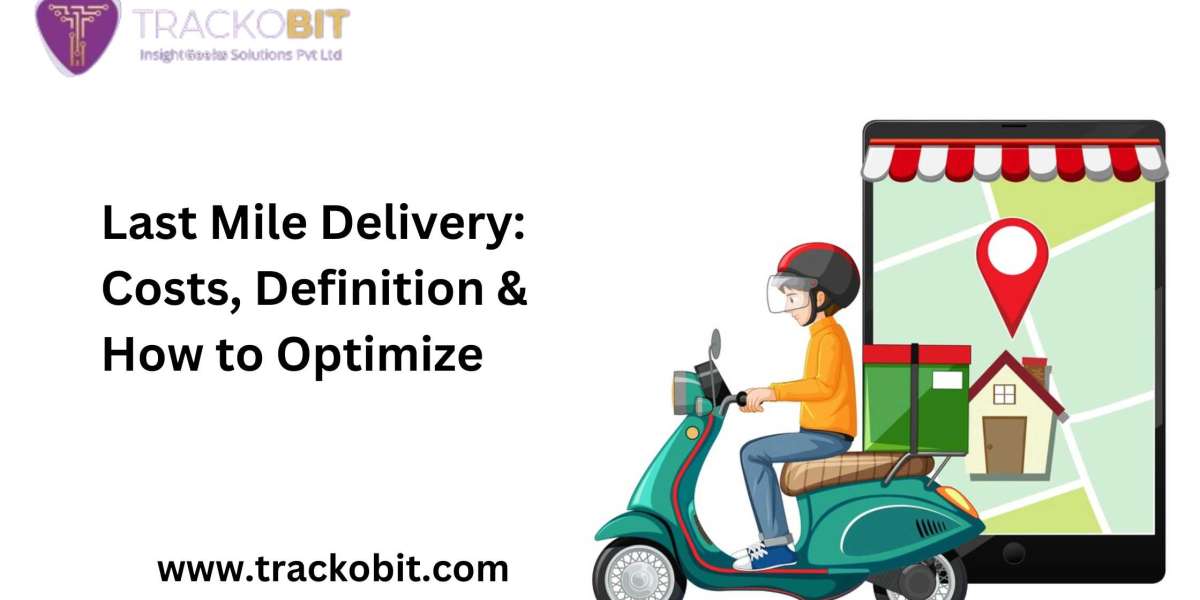The final stage of the delivery process, known as last mile delivery is crucial for customer satisfaction and business efficiency. This phase involves transporting a product from a warehouse to its final destination, typically a customer’s doorstep. Optimizing this stage is vital, especially for businesses that rely on quick deliveries.
In this article, we'll explore everything about last-mile delivery. So, keep reading.
Last Mile Delivery: An Overview
The term “last-mile delivery” refers to the final step in the delivery process. It’s a critical phase because it directly impacts the customer experience.
A fast delivery can boost customer satisfaction, while delays can lead to negative reviews and lost business.
Then, efficient last mile delivery also requires seamless coordination of multiple factors. This includes routing, traffic conditions, and customer availability. Companies that master this process tend to outperform their competitors in both customer retention and cost management.
Let's now get into why there's a need to choose last-mile delivery software.
Importance Of Last Mile Delivery Phase For Companies
The last mile phase is a key differentiator for businesses. This is especially true in today's e-commerce-driven market, where customer expectations are at an all-time high. After all, fast and reliable delivery has become the new standard.
- Customer Experience: Last-mile delivery is the point where customers physically interact with the brand. Any mistakes, such as late deliveries or damaged goods, can lead to dissatisfaction. Therefore, this phase plays a huge role in customer retention.
- Cost Efficiency: While last-mile delivery only represents the final step, it often makes up a large portion of the total delivery cost. Streamlining this stage can significantly lower operational expenses and improve profit margins.
- Brand Reputation: Reliable last-mile services build trust. Customers who receive their products on time are more likely to leave positive reviews and recommend your brand to others.
- Competitive Edge: In crowded markets, companies offering faster, cheaper, and more reliable last-mile delivery options can distinguish themselves from competitors.
Challenges That Companies Face During This Final Phase Of Delivery
While the importance of last-mile delivery is clear, it comes with a range of challenges that can complicate the process. This section highlights the need to choose last-mile delivery software.
- High Costs: One of the major hurdles is the high cost associated with last-mile delivery. This stage typically requires more labor and fuel, and frequent stops increase overall expenses.
- Unpredictable Factors: Unforeseen issues like traffic delays, weather conditions, and road closures can cause significant disruptions. These factors are often outside of the company's control, but they still affect delivery times and costs.
- Customer Expectations: Today's customers expect fast, often same-day, deliveries. Meeting these high expectations without inflating costs is a challenge for many businesses.
- Complex Routing: The last mile phase usually involves delivering to multiple locations in different areas. Optimizing routes while minimizing delivery times and fuel costs is a complex process.
- Technological Gaps: Many companies still rely on outdated methods for tracking and optimizing deliveries. This leads to inefficiencies, missed deliveries, and dissatisfied customers.
Tips To Optimize This Last Mile Phase
Improving last mile delivery is essential for both customer satisfaction and operational efficiency. Below are five tips to optimize this phase, with a special focus on using last-mile delivery software.
- Use Last-Mile Delivery Software
Investing in last-mile delivery software is the most effective way to optimize this phase. Advanced software can automate route planning, provide real-time tracking, and send updates to customers about their deliveries. This reduces manual errors, ensures quicker deliveries, and improves customer experience. By using data analytics, businesses can also make informed decisions on how to improve efficiency further. If you want to work with the best, consider TrackoMile.
With last-mile delivery software, companies can:
- Streamline their logistics processes.
- Provide accurate ETAs to customers.
- Track delivery vehicles in real-time.
- Automatically plan the most efficient routes.
By using robust software, businesses can reduce costs and ensure timely deliveries, keeping customers happy and loyal.
- Improve Route Planning
Efficient route planning is crucial to minimizing delays and reducing fuel costs. Using GPS and traffic data, businesses can adjust routes in real time to avoid congestion and shorten delivery times. Optimized routes not only save time but also help reduce vehicle wear and fuel consumption.
- Offer Multiple Delivery Options
Offering customers multiple delivery options can help spread out deliveries and reduce the pressure on the logistics team. By giving customers more flexibility, companies can also plan their deliveries more efficiently. This further reduces the likelihood of failed deliveries.
- Use Local Fulfillment Centers
Strategically placing fulfillment centers closer to your target customers can significantly reduce delivery times and costs. This approach, known as micro-fulfillment, allows businesses to store inventory closer to customers. Ultimately, this enables faster, more efficient deliveries.
- Enhance Communication With Customers
Lastly, one of the simplest ways to improve last-mile delivery is to keep customers informed. Send real-time updates via SMS or email to notify customers about the status of their delivery. Providing accurate delivery windows helps reduce missed deliveries and increases customer satisfaction.
Final Words
Overall, last-mile delivery is a crucial phase that can make or break your business. It impacts customer experience, operational costs, and your brand's reputation.
Thus, by addressing the challenges of this final phase and implementing strategies, businesses can spot a difference. Using last mile delivery software is among the top strategies. You can explore our TrackoMile to learn more about it. Hope this article helps.
Source : Last Mile Delivery: Costs, Definition How to Optimize








